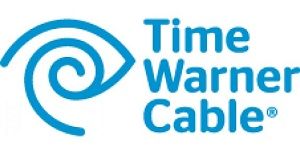Happy Days Ahead For TWC Vendors: Analyst

When Time Warner Cable announced an ambitious plan to go all-digital and follow up with a suite of faster broadband speeds, a deeper VOD library and a fleet of souped-up video gateways, that sound you heard might’ve the MSO's vendors cracking open the bubbly.
That’s because TWC’s big network and services overhaul plan, which gets underway first in New York City and Los Angeles before branching to other markets through 2016, offers a dose of good news for suppliers that could use a shot in the arm.
They didn’t get much of one from the MSO in the fourth quarter, as TWC reported fourth quarter 2013 capital spending of $827 million, below the $872 million expected by Raymond James, and the $850 million anticipated by Wall Street.
But the three-year capex outlook for TWC, which also includes a ramp up of line extensions to commercial buildings, looks “very encouraging,” even with the specter of a deal with Charter Communications, Raymond James analyst Simon Leopold explained in a research note issued Thursday.
TWC now plans to boost annual capital spending to $3.7 billion to $3.8 billion a year over that span, up from his original estimate of $3.43 billion in 2014, and $3.5 billion 2015.
“Although clearly Time Warner’s plans are not a guarantee, given the potential for a deal with Charter communications, we believe the announcement is a positive for cable equipment suppliers nonetheless,” Leopold wrote. “At the very least, the initiative outlines the baseline of investments that will need to take place, regardless of ownership, to transform Time Warner Cable into an entity that can remain competitive with the telcos such as AT&T and Verizon.
Leopold said TWC’s plan to roll out new video and broadband gateways is particularly good news for Arris following its acquisition of Motorola Home last spring, a move that increased its Arris’s exposure to customer premises equipment to about 70% of total sales.
Multichannel Newsletter
The smarter way to stay on top of the multichannel video marketplace. Sign up below.
TWC’s rollout could provide a “modest tailwind” to Harmonic right away, Leopold noted, believing that the operator will turn to dense edge QAMs before making the leap to next-gen Converged Cable Access Platform gear that combines the functions of edge QAM with the cable modem termination system. Harmonic’s CCAP-pointing NSG Pro is a starting off as a high-density, downstream-only edge QAM that will add upstream and CMTS pieces later.
TWC’s focus on a more highly reliable network, meaning in an increased focus on outside plant needs, offers a “clear positive” to CommScope, and cold help the vendor “offset the anticipated declines for its cable business.”
Leopold was less bullish on how TWC’s plan would affect Cisco Systems. “The last several quarters have seen Cisco distancing itself from the set-top-box market, noting it was consciously choosing to walk away from lower margin business. We believe that the margins for Time Warner’s initiative likely remain unattractive to Cisco and could lead to improvements in share gains from competitors such as Pace and Arris,” he wrote.
